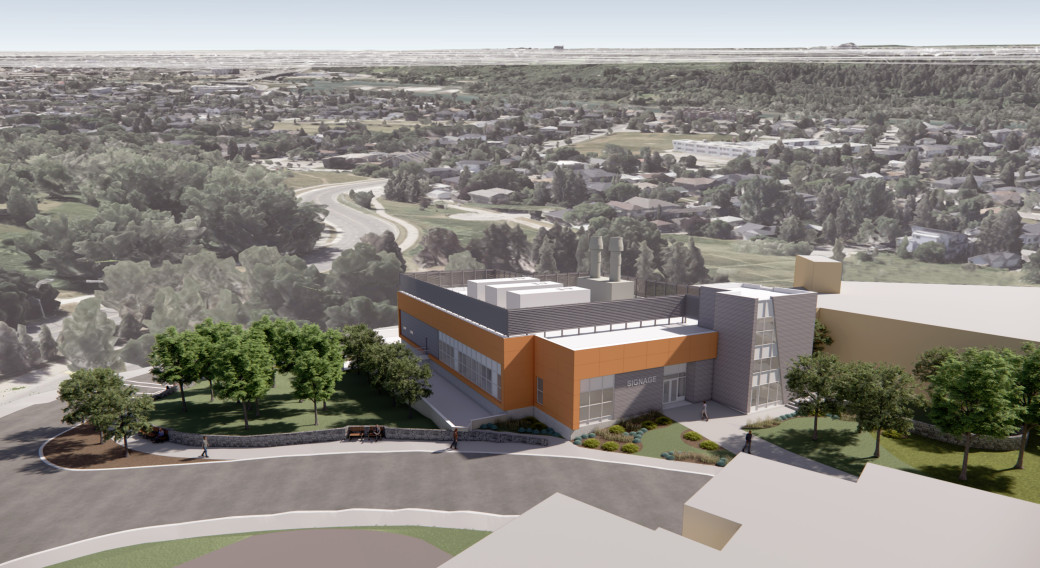Non-urgent government operations are closed December 24 to January 1, reopening January 2. View available services during this period.
Overview
The Calgary Radiopharmaceutical Centre (CRC) will be home to Calgary’s first and Alberta’s third cyclotron. This new facility will support the treatment of diseases including cancer, cardiac, and neurological conditions.
In 2025, the Development Permit (DP2024-07321) was approved by the City of Calgary, and the Canadian Nuclear Safety Commission issued a License to construct under the Nuclear Safety and Control Act marking significant milestones for the Project.
Construction of CRC is anticipated to be complete by fall 2027. Following the completion of construction, internal commissioning and green space reclamation activities will begin.
Project updates
November 2025
- New gas line to CRC (complete)
- Vault rehab
- Underground utilities
- Grade beam concrete pour (install formwork and rebar, concrete pour)
We encourage you to sign up for project email notices to stay informed as we move through construction.
Throughout the project Hospital Drive NW will be closed at the project site. For everyone’s safety, we kindly ask all those in the area to observe posted signage. Your cooperation helps ensure the well-being of both the public and staff working on the project.
Get informed



For additional details:
Radiopharmacy
A radiopharmacy is a specialized facility that handles and dispenses radioactive materials.
Cyclotron
A cyclotron is a machine within the radiopharmacy that will produce the radioactive isotopes used within Foothills Medical Centre (FMC).
Facility safety
Cyclotrons adhere to stringent safety regulations enforced by the Canadian Nuclear Safety Commission (CNSC). The facility incorporates multiple safety layers, including shielding, containment, and operational monitoring.
Safety begins with the facility's design, including concrete walls which will be approximately 2.0 meters (~7 feet) thick. The facility employs a sophisticated radiation monitoring system including detectors, handheld survey meters, and contamination meters, to prevent accidental removal of radioactive material.
A containment system prevents the release of radioactive gases into the atmosphere, and they are held until they decay into non-radioactive elements. For more information about safety regulation visit CNSC.
Alberta Health Services (AHS) is responsible for the public disclosure of any incidents that may occur on site through operation of this facility. To view the notification and disclosure requirements, visit AHS Cyclotron Public Disclosure.
Facility operation
The facility will be operated by AHS and utmost care will be undertaken by Foothills Medical Centre Staff to ensure its safe operations.
Construction process
Site preparation, planning, and investigations are underway. Work will be undertaken in three main stages.
- Stage 1 (Complete) – Site preparation and demolition: Fencing has been installed at site. This stage requires levelling of the site and will involve the removal of soil, an existing retaining wall, relocation of fibre and water lines, and trees to prepare the site for building construction.
- Stage 2 (Complete) – Site grading, earthworks and shoring to prepare for building construction. This will include an increase in construction activities at site and will require closure of Hospital Drive NW just south of the site to be closed to motorists but will remain open to pedestrians.
- Stage 3 (Underway) – Construction of the physical building is now underway with the receipt of the Development/Building Permits and the CNSC approval for License to Construct.
- Stage 4 – Green space reclamation and internal commissioning (anticipated in 2027)
Construction impacts
Construction activities may cause short-term impacts to the neighbouring community. Our team will endeavour to minimize those impacts where possible.
If you have any questions or concerns during construction, please do not hesitate to reach out to the project team at 1-888-989-8810 or by email [email protected].
Sign up for updates
Complete the form below to sign up for project updates.